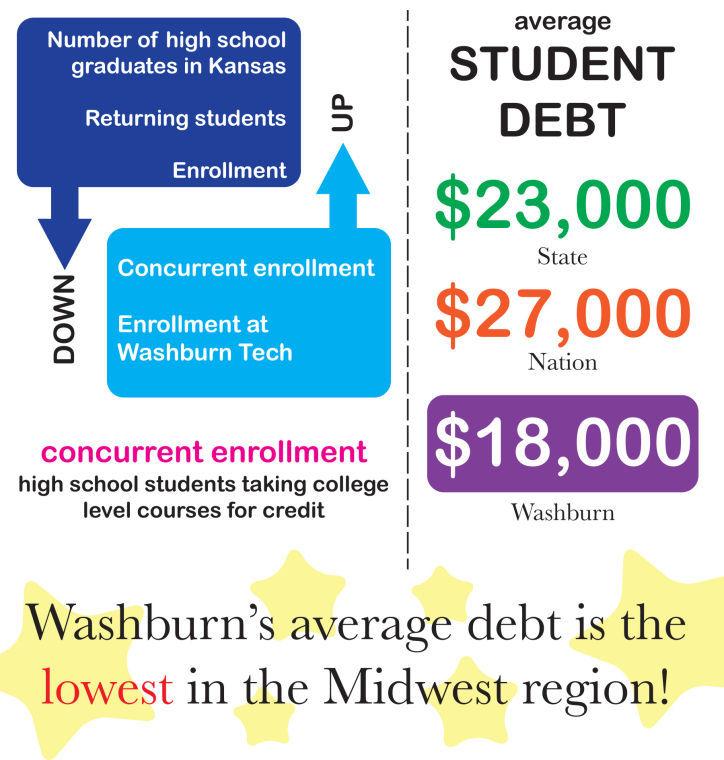Enrollment has its ups and downs
October 15, 2013
Enrollment rates for this semester are mixed according to both Washburn president, Jerry B. Farley and executive director of enrollment management, Richard Liedtke.
“Overall university enrollment numbers including Washburn Tech are up by 14 percent. When you split the two schools, however, Washburn University’s enrollment is down, and Washburn Tech’s enrollment is up,” said Liedtke.
Farley seemed to have an idea of what caused the drop in Washburn University’s enrollment, citing a decrease in transfer students and a decline in the number of high school graduates in the state of Kansas as part of the problem.
“The number of high school graduates in the state has been declining for several years, and will continue to decline for at least the next two years through the graduating class of ‘15, so we’ve got a lot of work to do there to
make our numbers hold up,” said Farley.
The Washburn president also revealed his plans to make up the transfer student numbers by making Washburn a more transfer friendly school.
“We want to make sure that if you get a credit hour at community college, you can transfer it to Washburn University and it’ll be done seamlessly,” said Farley.
The total number of freshman attending directly from high school saw no increase or decrease in numbers.
“Returning students were down a bit, as well,” said Farley “and that may be due to the economy. The economy’s improved so students are thinking, ‘Well, maybe I’ll go work for a while before I go ahead and finish school.’”
One of the categories, that substantially increased was concurrent enrollment, a joint effort by Washburn and Kansas high schools that allows high school students to take college level courses and earn credit hours while still in high school.
Enrollment at the Washburn Tech campus is up as well.
“At the Washburn Institute of Technology, high school enrollment is up 35 percent, and post-secondary is up by about 22 percent, overall, about a 26 percent increase,” said Farley.
On the subject of loans, Farley explained that a little over half of the campus’ students leave the campus with debt. Farley attempted to put that debt in perspective, though, by examining the average debt load when students graduate Washburn, compared to the average college debt for the state, $23,000, and the nation, $27,000.
“When Washburn students leave, their debt is, on average, less than $18,000,” said Farley. This puts Washburn student debt at $5,000 less than the state student debt average and $9,000 less than the national average. The president also revealed that Washburn’s average student debt is actually the lowest in the Midwest region.
Overall, there’s good news and bad news, as Washburn enrollment numbers are unfortunately more down than up. The good news is that the average Washburn student debt rate is below the average for both the state and the nation.



